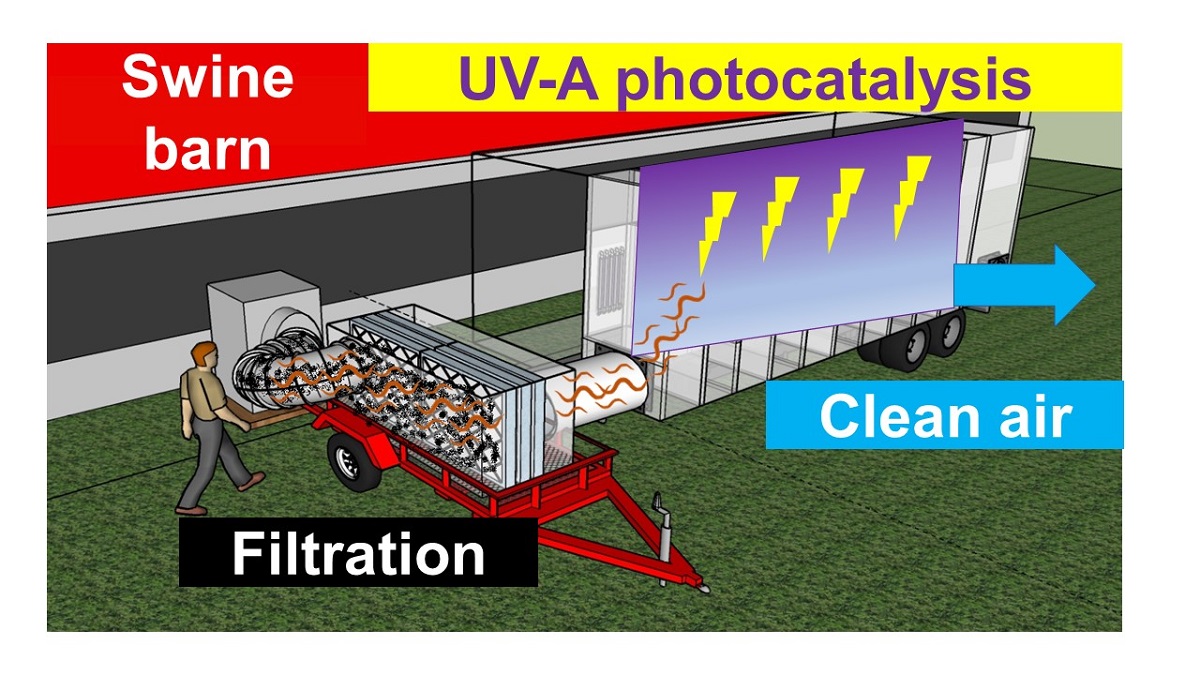UV-A (ca. 365 nm wavelength, a.k.a. 'black light') photocatalysis has been investigated to comprehensively mitigate odor and selected air pollutants in the livestock environment. This study was conducted to confirm the performance of UV-A photocatalysis on the swine farm. The objectives of this research were to (1) scale-up of the UV-A photocatalysis treatment, (2) evaluate the mitigation of odorous gases from swine slurry pit, and (3) test different UV sources, (4) evaluate the effect of suspended particulate matter (PM), and (5) conduct preliminary economic analyses. We tested UV-A photocatalysis at a mobile laboratory-scale capable of treating ~0.2 - 0.8 m3·s-1 of barn exhaust air. The targeted gaseous emissions of barn exhaust air were significantly mitigated (p < 0.05) up to 40% reduction of measured odor; 63%, 44%, 32%, 40%, 66%, and 49% reduction of dimethyl disulfide, isobutyric acid, butanoic acid, p-cresol, indole, and skatole, respectively; 40% reduction of H2S; 100% reduction of O3; and 13% reduction of N2O. The PM mitigation effect was not significant. Formaldehyde levels did not change, and a 21% generation of CO2 was observed. The percent reduction of targeted gases decreased as the airborne PM increased. Simultaneous chemical and sensory analysis confirmed that UV-A treatment changed the overall nuisance odor character of swine barn emissions into weaker manure odor with 'toothpaste and 'mint' notes. The smell of benzoic acid generated in UV-A treatment was likely one of the compounds responsible for the less-offensive overall odor character of the UV-treated emissions. Results are needed to inform the design of a farm-scale trial, where the interior barn walls can be treated with the photocatalyst, and foul air will be passively treated as it moves through the barn.

